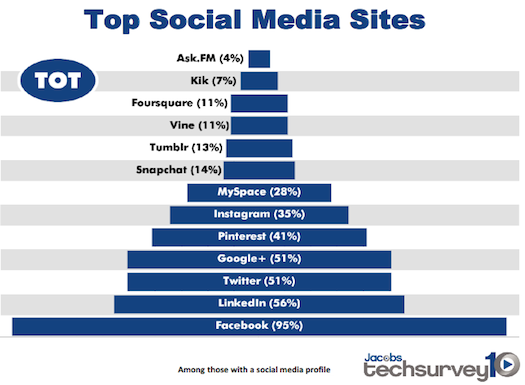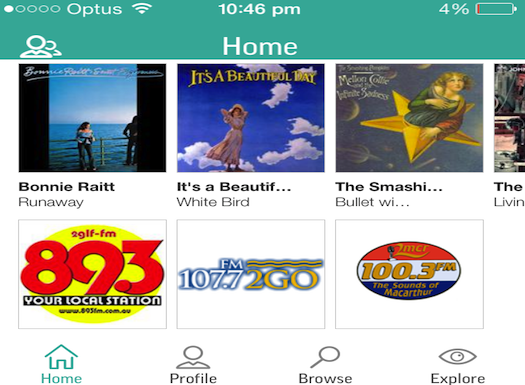Facebook is still the most effective social media tool to drive traffic to radio station websites, according to a survey by Jacob’s Media in the US.
Jacob’s Media has been surveying thousands of American listeners about their social media habits for the past decade, and the latest survey finds that, while newer social media platforms are growing, it is still facebook that delivers most people to radio stations. LinkedIn, twitter, Google+ and Pinterest are also powerful audience drivers, but well behind Facebook. See all the charts here.
The study surveyed 37,063 Respondents from 199 Radio Stations to guage the digital tipping point for radio businesses.
According to the study, 75% of Americans own a smartphone, while more than half (51%) carry a tablet. Significantly, the streaming audience is growing, with more than half (55%) streaming audio at least weekly, while two-thirds (67%) access online video during a typical 7-day period.

90% of people say they are listening to more radio now than they were last year, with only 9% saying they listen to less radio. While people are integrating streaming music services into their listening schedule, the news is very positive for traditional radio.
The key takeaways, according to Jacobs Media, are:
-
Radio now competes with everyone. It is essential for broadcasters to view the competitive landscape beyond other stations down the dial. Radio has a myriad of digital competitors, forcing the industry to develop effective strategies.
-
Stop doing random acts of digital. Radio can’t just show up in new digital spaces, but needs to excel there. Broadcasters need mobile engagement, a competitive stream, and to stop treating social media as a hobby.
-
Radio doesn’t have a digital problem – it has a measurement problem. It is essential that ratings account for all the different ways that consumers are accessing radio content.
-
Every person counts. Broadcasters need to commit to a policy of social acknowledgment in order to reap the benefits of fan engagement.
-
Radio needs to go to school on cars. Techsurvey10 reaffirms the importance of the automotive industry to radio. And as more vehicles become truly “connected,” competition for the ears and attention spans of drivers will only intensify.
-
Radio needs to address the challenges & opportunities presented by young consumers. TS10 offers several avenues and touch points that connect radio brands to this audience. But their media habits – from waking up in the morning to headphone usage – run counter to traditional behavior.
- The music industry ignores radio at its own peril. Radio is a powerful force when it comes to new music discovery and artist exposure and promotion. It dominates all other media, and emerges as a trusted source for music consumers.


Someone should show this to PPCA - particularly point seven.